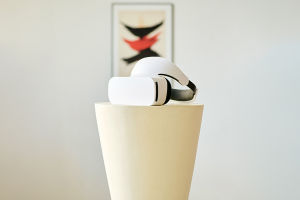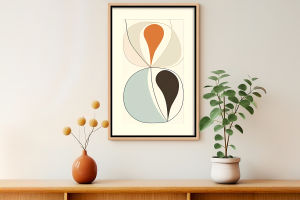When you see a great human sculpture, it's not just the face or posture that grabs you—it's the way every proportion feels believable.
The tilt of a shoulder, the length of a forearm, the curve of a hip—all in harmony. You might not consciously measure it, but your brain instantly knows when something's off.
That's why mastering proportion is one of the most powerful skills for a sculptor aiming for realism.
Why Proportion Shapes Believability
The human body has a set of ratios that we've learned to recognize since birth. Leonardo da Vinci's Vitruvian Man famously visualized the idea that the body can be broken down into mathematical relationships—like the head being roughly one-eighth of the total height. These relationships aren't rigid rules, but they're the backbone of realism.
Inaccurate proportions can make a figure unintentionally stylized or awkward. For example, shortening the legs slightly may make the figure look heavier and grounded, while elongating them creates elegance but risks losing natural balance. Even in dynamic poses, the underlying proportions need to "read" correctly for the viewer's mind to accept the scene as real.
Practical Ways to Achieve Accurate Proportion
Getting proportion right isn't guesswork—it's systematic observation and measurement.
1. Use a unit of measure – Many sculptors use the head length as a base unit. For example, an average full-grown human figure is about 7.5–8 heads tall.
2. Check negative space – Don't just measure limbs; pay attention to the shapes between them. This can catch errors that straight measurement might miss.
3. Work from a maquette – Creating a small clay or wax model first helps you test proportions in three dimensions before committing to a full-scale piece.
4. Constant 360° checks – Walk around your work often. A figure can look perfect from one angle but warped from another.
Dynamic Realism: Beyond Static Measurements
Proportion isn't only about stillness—capturing movement requires bending those rules strategically. A running figure might have the torso leaning forward, with limbs stretching beyond their resting proportions. This is where contrapposto, the gentle shift of weight in the hips and shoulders, creates life.
The key is exaggerating just enough to suggest motion without breaking anatomical logic.
To do this, study life models or sports photography. Notice how joints compress or extend, how muscle groups shift, and how the spine adjusts. Sculpting from memory alone risks "default poses" that lack authenticity.
Material Choice and Surface Feel
The material you choose directly influences how the viewer experiences proportion and form.
• Clay – Flexible and forgiving, clay is ideal for experimenting with proportion during the build-up stage. Its softness also allows fine details that enhance realism, such as subtle skin folds.
• Stone – Demands commitment, as subtractive carving leaves no room for error. The hardness gives a timeless permanence but may limit how much fine anatomical variation you can add.
• Bronze – Often used for casting after an initial clay model. Its ability to capture fine texture makes it perfect for lifelike skin, hair, or fabric folds that complement proportion.
• Wood – Offers warmth in tone and texture, but its grain can guide or resist certain forms, subtly affecting the perception of proportion.
Your material's natural qualities will either amplify or soften the anatomical truth you sculpt. For instance, a marble figure with smooth, cool surfaces can evoke idealized perfection, while a clay bust with visible tool marks might feel raw and intimate.
Integrating Proportion and Surface to Tell a Story
A well-proportioned sculpture doesn't just "look right"—it communicates. The way you combine form and surface texture can shift the entire emotional tone:
• A soldier's posture, perfectly proportioned but with rough-hewn surfaces, can convey resilience.
• A dancer's elongated limbs, polished to a high sheen, can radiate elegance and fluidity.
• A weathered elder's face, with every wrinkle carved in proportion to the skull beneath, can speak of endurance and history.
In each case, proportion provides the structural truth, while texture and finish deliver the emotional truth.
A Sculptor's Balancing Act
The real challenge is finding the sweet spot where proportion, form, and material harmonize. Too much focus on proportion without attention to surface can result in a technically correct but lifeless figure. On the other hand, a highly expressive surface treatment on a poorly proportioned form can feel disorienting to the viewer.
One effective practice is to sculpt in "layers"—first locking in proportion with simple forms, then refining anatomy, then adding texture. This layered approach helps you maintain structural integrity while still allowing expressive flourishes in the final stages.
Mastering proportion is less about memorizing ratios and more about developing an eye for truth. It's about seeing not just what's there, but how the body's architecture supports movement, weight, and emotion. Combine that structural accuracy with a material that complements your vision, and you can create sculptures that don't just represent life—they embody it.
If you were to sculpt a figure right now, would you start with precise measurements or with an expressive pose? The answer might tell you where your artistic instincts lean—and where your next breakthrough could come from.


